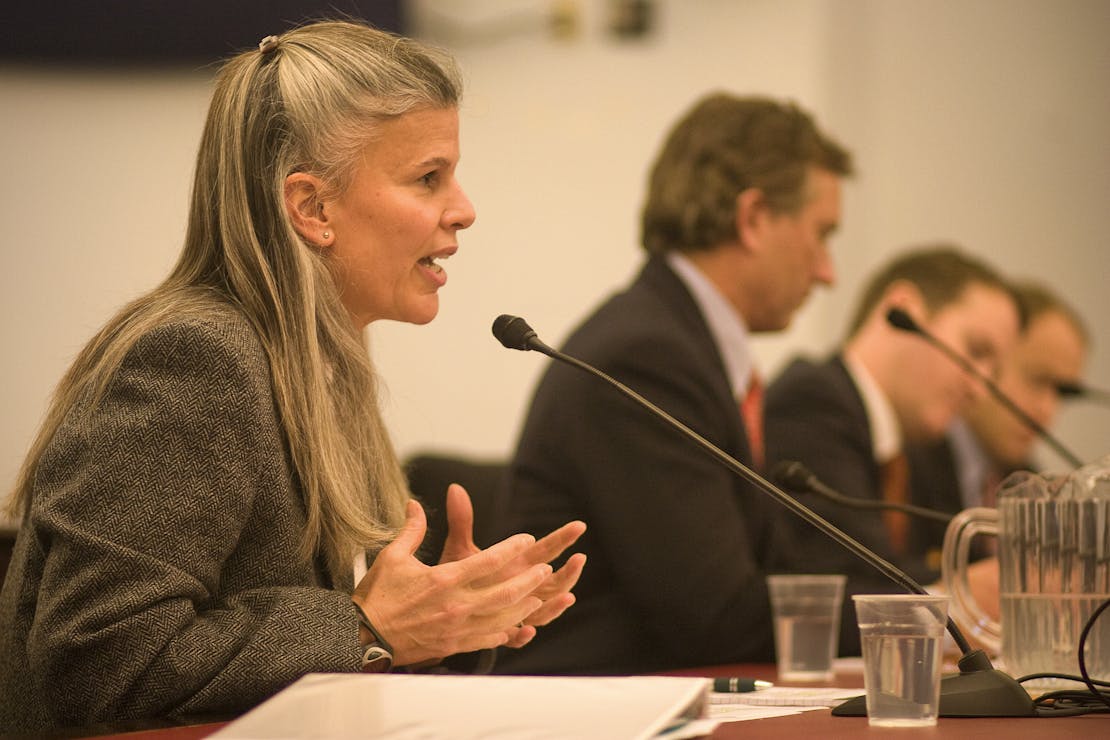Throughout its 75 years, Defenders of Wildlife has been led by a number of intrepid and passionate women. The most influential of the 1960s and 1970s was Mary Hazell Harris. A former librarian for the government’s Superintendent of Documents Department, she found her true calling in life through getting involved with Defenders.
When Harris first came to Defenders, she moved the organization toward predator protection. She was obsessed with wildlife, particularly wolves. She started as a volunteer in the late 1950s and then in 1965, after her retirement from government, began running Defenders as executive secretary (the equivalent of executive director at the time) and became the editor of the magazine until 1974. She then served on the board until 1977.
Harris testified before Congress several times about the dangers of Compound 1080, an indiscriminate poison used to kill predators that seriously harmed other wildlife, too. She also testified about the need to establish a national wildlife refuge for tule elk, an imperiled elk species found only in California. Harris brought Rachel Carson, the influential author of Silent Spring, onto Defenders’ board of directors. They were introduced by another pioneering woman, journalist Ann Cottrell Free, who wrote extensively on animal protection issues and specifically Compound 1080. Free’s stories helped mobilize congressional and public support for the successful passage of the Humane Slaughter and Animal Welfare Acts of 1958 and 1978.
In 1973, Harris wrote a letter to the editor of the New Yorks Times in response to an article on the dangers of continued use of lead shot. She wrote, “We were gratified to see your recent editorial plea for public action on the equally important and equally distressing questions of inhumane trapping methods and the continued use of lead shot—both of which have taken a staggering toll of our nation's ever diminishing wildlife resources.”
Interestingly enough, Harris took over Defenders from another woman, Katherine Bryan, who served as executive secretary when Defenders of Wildlife was still Defenders of Furbearers. In 1957, Bryan spoke in front of Congress about the establishment of a National Outdoor Recreation Resources Review Commission. She said, “Increasing pressures of our accelerating population to convert forests, wet lands and marshes, beaches and streamsides, into sites for agricultural and industrial development are threatening the survival of many forms of wildlife through loss of place for them to live.”
Bryan also fought hard to get the Trapping Bill of 1960 passed, which called for the use of humane methods of trapping animals and birds on lands and in waterways.
If this all sounds too familiar, it’s because it is. Defenders is still fighting for these causes. We write about them weekly and file lawsuits frequently for the protection of wildlife and their habitat.
Defenders of Wildlife continues to be headed by a determined and formidable woman, Jamie Rappaport Clark, who also served as director of the U.S. Fish and Wildlife Service.
Like millions of women, she faced challenges most men didn’t have to face such as being the only woman in her graduate advisor’s program. Clark was warned repeatedly that fieldwork could be “dangerous” and that working with wildlife was not for women.
History shows otherwise. Wildlife conservation is most certainly a place for women, and one where they have the power to make real change. Mary Hazell Harris and Katherine Bryan were crusaders in predator protection. Their passion and determination helped shape the Defenders of Wildlife we know today. We’re proud to carry the torch these women lit some 50 years ago.
Check out other amazing women at Defenders here!








Follow Defenders of Wildlife
facebook bluesky twitter instagram youtube tiktok threads linkedin